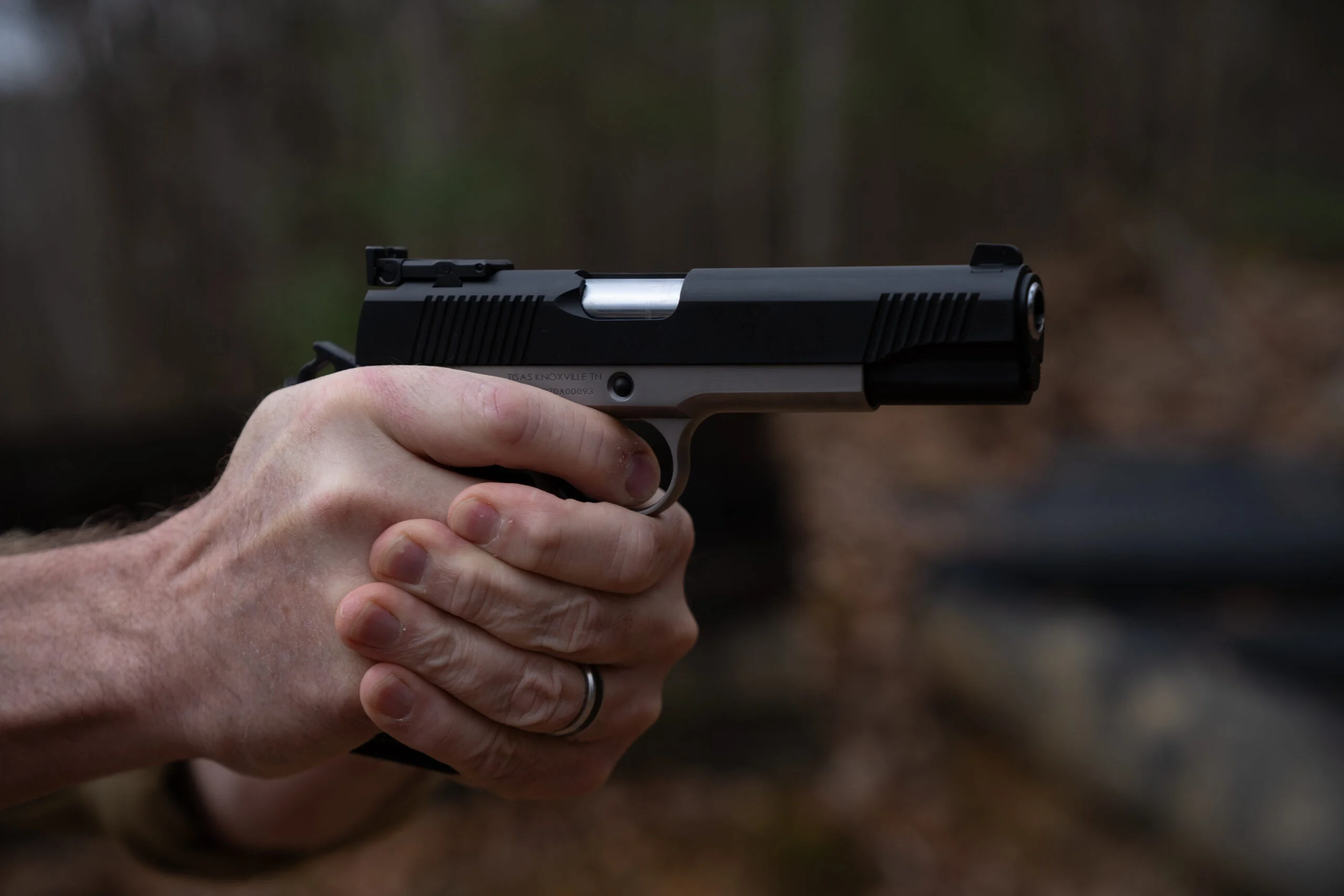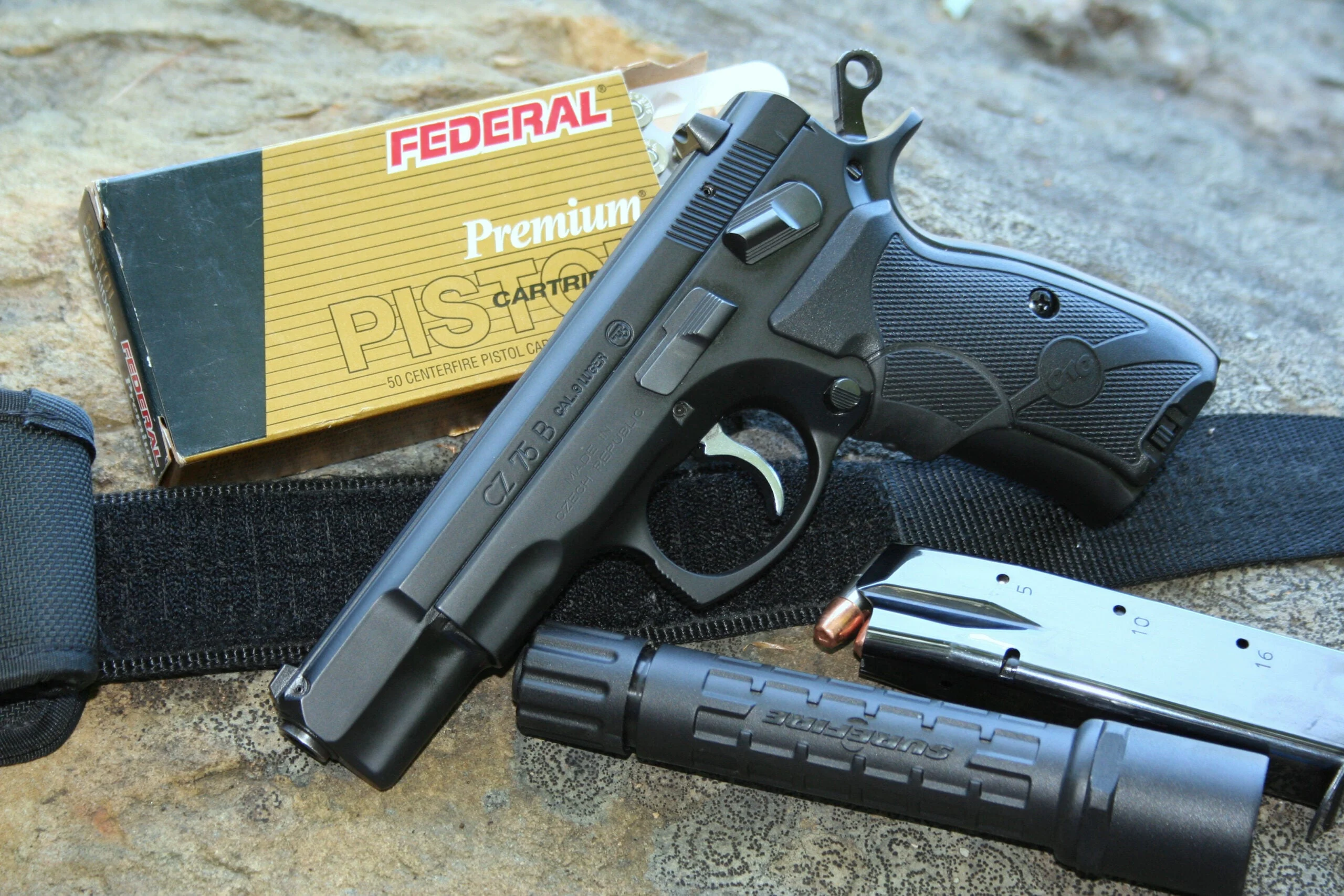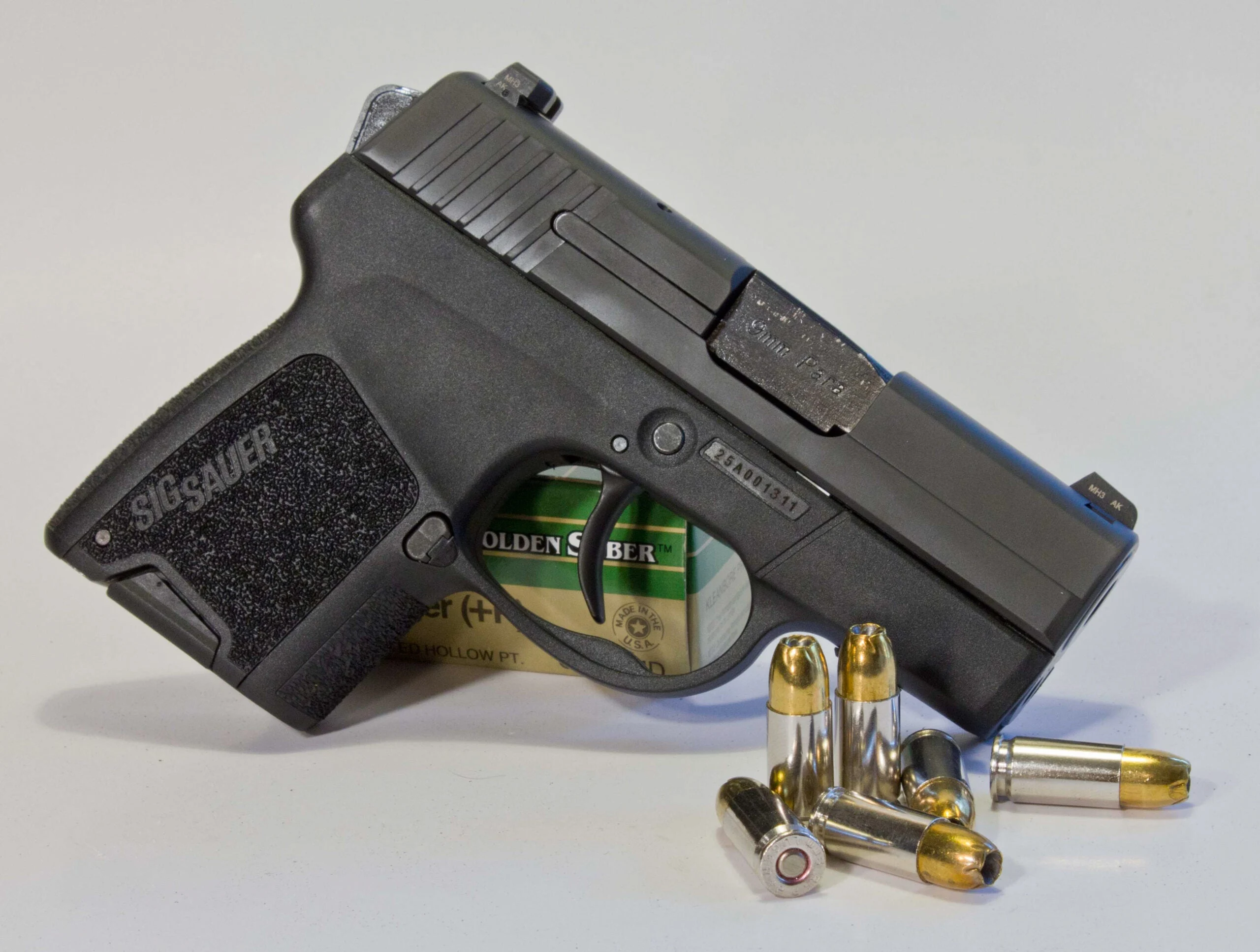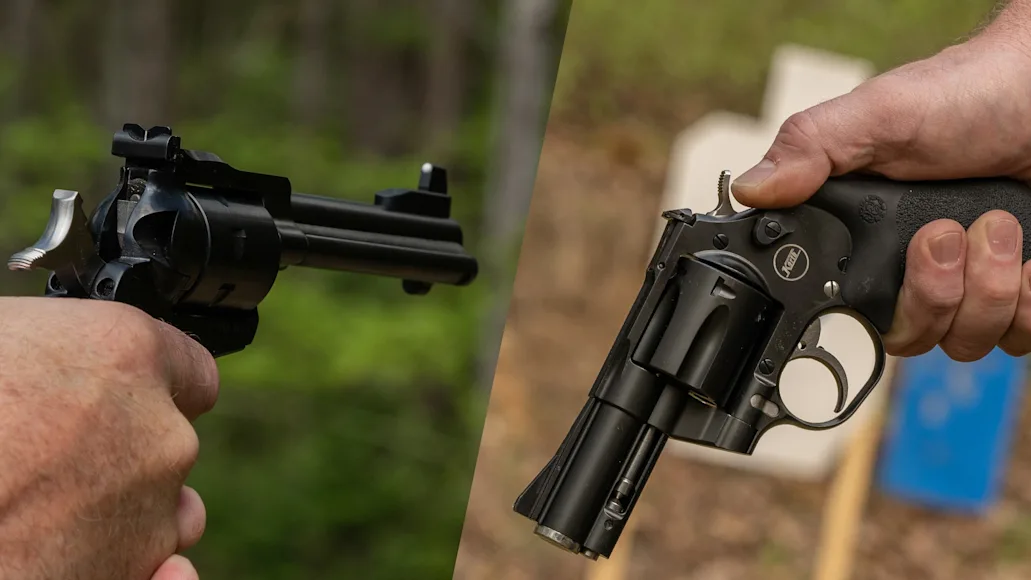_We may earn revenue from the products available on this page and participate in affiliate programs. Learn more ›
_
What’s the deal with single action vs double action handguns? Well, it’s all about the trigger and exactly what happens when it’s pressed. The only thing the trigger of a single action (SA) handgun does is release a cocked hammer to fire the gun. With a double action (DA) handgun, pressing the trigger cocks and releases the hammer. We could leave the explanation there, but as they say in calculus class, it gets complicated. It gets complicated because both revolvers and pistols
come as either single or double action, and because within these two distinctions there are variations that require some explaining. So, here is a full breakdown of single action vs double action handguns.
Single Action Revolver

The Colt Single Action Army is the most iconic single action revolver of all time. To fire this revolver, you must first manually cock the hammer. Richard Mann
How it Works
The single action revolver is the classic cowboy six-gun, epitomized by the Colt Single Action Army
or the Ruger Blackhawk
or Single Six
. With a single action revolver, the hammer must be manually cocked before the gun can be fired. So, the trigger of a SA revolver has a single function; when pressed, it releases the hammer, allowing the gun to fire. Once you have fired a SA revolver, you must manually re-cock the hammer to shoot it again. If you’ve cocked a SA revolver and decide not to shoot, you can press the trigger while holding the hammer back and manually lower the hammer to a safe, half-cocked position. But you’ll have to cock the hammer again when you decide to shoot.
Single Action Pistol

The most popular single action pistol is the 1911, which is now made by more than 30 different manufactures. Richard Mann
How it Works
The trigger of a single action pistol works the same as the trigger of a SA revolver. But because the slide of a SA pistol must be manually retracted to load the handgun, and because the slide cycles to the rear after every shot, in both instances it cocks the hammer. So technically, you never really have to cock a SA pistol. But, if at some point you decide to manually lower the hammer, then, just like with a SA revolver, you must re-cock it to shoot it. Because most SA pistols are carried cocked, a manual thumb safety that “locks” the pistol and prevents it from firing, like on the Colt 1911, is generally part of the package. Because some shooters are nervous about carrying a “cocked and locked” pistol, they either avoid SA pistols or carry them with the hammer down, which means they must thumb-cock the pistol before they can shoot it.
Double Action Revolver

This Korth above is a double action revolver. Pulling the trigger cocks and releases the hammer, and you can also manually cock the hammer. Richard Mann
How it Works
For many years, double action revolvers like the Smith & Wesson Model 686 were the most popular sidearms for law enforcement. With a DA revolver, you have options, because the trigger has two functions. If the hammer is manually cocked, the DA revolver trigger works just like a SA revolver trigger; when pressed, it releases the hammer. But if a DA revolver is not cocked, you can pull the trigger and it will cock and release the hammer. This makes the double action revolver faster to shoot and better suited to law enforcement or for self-defense. Also, just like with a SA revolver, you can manually lower the hammer on a DA revolver after it has been cocked.
Double Action Pistol

The CZ-75 is a double action pistol. Though a version is offered with a de-cocker, this one has a safety. If you want to lower the hammer, you have to do it manually. Richard Mann
How It Works
If a DA pistol is not cocked, a single trigger press will cock and release the hammer. You can manually cock a DA pistol for the first shot, but after a DA pistol has been fired, the pistol’s slide cycles and cocks the hammer for you. Many DA pistols have a de-cocker, a lever that un-cocks the hammer allowing it to safely fall and return the pistol to double action mode. The difficulty with managing DA pistols is that the first trigger press is long and hard because it has to cock and release the hammer, subsequent trigger presses are lighter and crisper because after the first shot the hammer remains cocked. Also, with some DA pistols, if the cartridge fails to fire, you can pull the trigger and try to fire that same cartridge again.
Double Action Only Revolver

This is a custom built revolver with a bobbed hammer, and though it could technically be “cocked,” the bobbed hammer makes this nearly impossible. It’s an example of a DAO revolver. Richard Mann
How It Works
Complicating the single action vs double action conversation are double action only handguns. They are a little different—but only a little. Let’s start with DAO revolvers. The only difference in a double action only (DOA) revolver and a DA revolver is that the hammer cannot be manually cocked because it has no “cocked” notch, because it’s been bobbed, or because it’s shrouded or concealed. A bobbed, shrouded, or concealed hammer is less likely to catch on clothing during the draw stroke, and that’s really the only advantage a DAO revolver offers. The inability to cock the hammer on a DAO revolver circumvents the lighter trigger action associated with firing a revolver in the SA mode, and some believe this makes DAO revolvers safer. The truth is, it’s well-trained humans that make guns safe.
Double Action Only Pistol (DAO)

The Sig Sauer P290 is a double action only pistol. Richard Mann
How It Works
The trigger of a DAO pistol it cocks and releases the hammer—every time—and since there’s no “cocked” notch on the hammer you cannot manually cock it. After you fire a DAO pistol, the slide recoils and pushes the hammer back, but as the slide goes forward, the hammer follows it to a “safe” un-cocked position. Like some DA pistols, most DAO pistols have re-strike capability. If the cartridge in the chamber does not fire you can pull the trigger for another attempt. It’s debatable if this is an advantage or a drawback. In most cases if a cartridge fails to fire, it will not fire in subsequent attempts and that can waste time. A better approach is to get the dud out of the gun as quickly as possible. As with DA pistols, DAO pistols have been largely replaced by striker-fired pistols.






